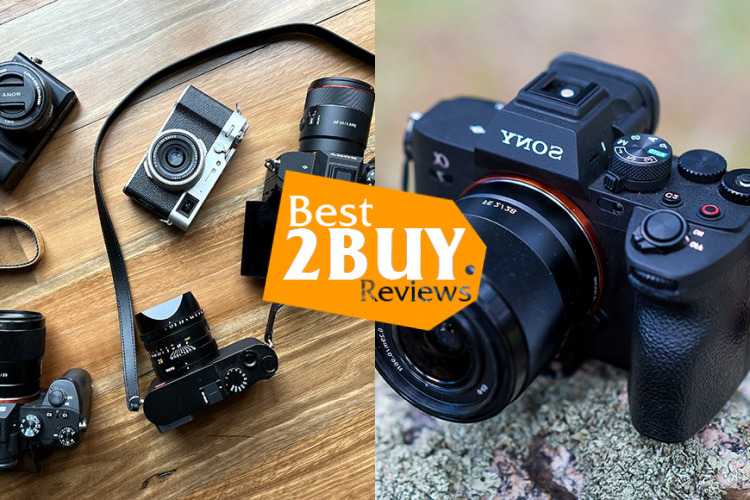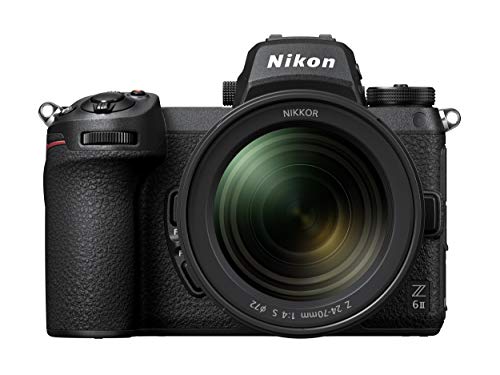A Comprehensive Guide To Mirrorless Cameras

- 1. A Comprehensive Guide To Mirrorless Cameras
- 1.1. What is a mirrorless camera?
- 1.2. Key Features
- 1.2.1. Interchangeable Lenses
- 1.2.2. Autofocus Technology
- 1.2.3. Electronic Viewfinders (EVFs)
- 1.2.4. 4K Video Capabilities
- 1.3. Advantages Of Using A Mirrorless Camera
- 1.3.1. Compact and Lightweight Design
- 1.3.2. Accurate Representation of the Shot
- 1.3.3. Concealability in Crowds
- 1.3.4. Accessibility at Affordable Prices
- 1.4. Choosing the Right Mirrorless Camera
- 1.4.1. Image Quality
- 1.4.2. Availability of Lens
- 1.4.3. Size of the Sensor
- 1.4.4. Size and Weight
- 1.4.5. Features and Functionality
- 1.4.6. Durability
- 1.4.7. Battery Life
- 1.5. In Conclusion
Over the recent years, there has been a notable surge in the popularity of mirrorless cameras, revolutionizing the photography scene and reshaping the manner in which we capture moments. Unlike traditional DSLR cameras, mirrorless alternatives boast a sleek and lightweight design, increasingly attracting interest from both casual enthusiasts and experienced photographers. This extensive guide aims to explore the essential facets of mirrorless cameras, illuminating their distinctive qualities and elucidating the reasons behind their impactful influence on the field of photography.
What is a mirrorless camera?
A mirrorless camera provides the flexibility to swap lenses similar to DSLRs. However, unlike DSLRs, mirrorless cameras lack an internal mirror, hence the term "mirrorless."
In DSLRs, a mirror reflects light from the lens to the viewfinder, enabling you to preview the shot. Conversely, a mirrorless camera operates without a mirror. Instead of directing light to the viewfinder, it allows light to directly reach the sensor. The camera employs a digital viewfinder to display a preview of the sensor's captured image.
Key Features
Interchangeable Lenses
Similar to DSLRs, mirrorless cameras provide the versatility of interchangeable lenses. This enables photographers to select the ideal lens tailored to their particular requirements, be it a wide-angle lens for capturing landscapes, a prime lens for portraiture, or a telephoto lens for wildlife photography.
Autofocus Technology
Many mirrorless cameras feature advanced autofocus systems, utilizing on-sensor phase detection or contrast detection. This results in fast and accurate focusing, particularly beneficial for capturing moving subjects or shooting in low-light conditions.
Electronic Viewfinders (EVFs)
Instead of an optical viewfinder, mirrorless cameras use electronic viewfinders or rely solely on the rear LCD screen for composing shots. EVFs provide a digital preview of the image, displaying real-time changes to exposure settings and allowing for a more accurate preview of the final image.
4K Video Capabilities
Mirrorless cameras often excel in video recording, with many models offering 4K video capabilities. The absence of a mirror allows for faster and more precise focusing during video capture, making them a popular choice for videographers.
Advantages Of Using A Mirrorless Camera
Compact and Lightweight Design
One of the standout features of mirrorless cameras is their small size and reduced weight compared to traditional DSLRs. The absence of a bulky mirror and optical viewfinder mechanism makes mirrorless cameras sleek and portable. This advantage is particularly noteworthy for photographers who prioritize mobility and convenience without compromising on performance. The lightweight design facilitates effortless transportation, making mirrorless cameras the ideal companion for on-the-go photographers.
Accurate Representation of the Shot
Mirrorless cameras excel in providing a more precise representation of the final image compared to their DSLR counterparts. The absence of a mirror allows for a direct digital preview of the scene through the electronic viewfinder or LCD screen. This real-time feedback empowers photographers to make instantaneous adjustments to settings like exposure and white balance, ensuring that the captured image aligns with their creative vision. The ability to see the actual image before pressing the shutter button enhances the overall accuracy and efficiency of the photographic process.
Concealability in Crowds
Mirrorless cameras' compact form factor makes them highly inconspicuous, a valuable trait when shooting in crowded environments. The discreet nature of these cameras enables photographers to blend seamlessly into the surroundings, capturing candid moments without drawing undue attention. Whether documenting street scenes or events, the ability to conceal the camera adds a layer of versatility to the photographer's toolkit, allowing for authentic and unobtrusive storytelling.
Accessibility at Affordable Prices
Mirrorless cameras have become increasingly accessible, offering impressive performance at compelling price points. As technology advances, these cameras have entered the mainstream market, providing amateur photographers and enthusiasts with a cost-effective entry into the world of high-quality imaging. The affordability of mirrorless cameras makes them an attractive option for individuals looking to upgrade from compact cameras or entry-level DSLRs without breaking the bank.
Choosing the Right Mirrorless Camera
In the swiftly changing landscape of contemporary photography, the plethora of camera options presents a dual-edged sword for photographers. The wide array of choices can be a source of both opportunity and challenge, with even experienced photographers finding themselves perplexed by the sheer variety. Nevertheless, equipped with the appropriate knowledge and a discerning eye for features, discovering a high-quality camera becomes a manageable endeavor. This guide aims to provide a comprehensive resource to assist you in navigating the diverse realm of cameras and selecting one that best suits your photographic requirements.
Image Quality
While the photographer's expertise undeniably plays a significant role in determining the quality of an image, the choice of a high-resolution camera is paramount for capturing breathtaking photos. Opting for a camera with greater resolution not only enhances the portrayal of finer details but also provides increased flexibility during post-processing. Seek cameras equipped with advanced sensors and higher pixel counts to ensure the attainment of superior image quality.
Availability of Lens
The lens is the window through which your camera captures the world, making it a pivotal element in photography. Sometimes, opting for a higher resolution may draw attention to optical flaws in the lens. It's essential to strike a balance between resolution and lens quality. A stellar lens with fewer megapixels can often deliver clearer and more visually appealing images than a high-resolution counterpart with a mediocre lens.
Size of the Sensor
The camera's core lies in its image sensor, which records data collected from the lens. Enhanced image quality is achieved with larger sensors that can capture more information. When selecting a camera, prioritize those with larger sensors to guarantee superior depth and clarity in your photos, particularly in difficult lighting scenarios.
Size and Weight
Think about the primary location where you intend to use your camera. If you frequently travel, opting for a compact and lightweight camera would likely be the most suitable choice. Generally, mirrorless cameras are lighter and more portable compared to DSLRs, making them well-suited for photographers who are often on the go. However, if you value features more than portability, a DSLR could be a more fitting option.
Features and Functionality
An essential element found in numerous contemporary cameras, particularly mirrorless models, is the electronic viewfinder (EVF). In contrast to the conventional viewfinders in DSLRs, EVFs offer a live digital preview of the scene, enabling you to observe precisely how the final image will appear. This functionality can greatly improve your photography experience by delivering increased convenience and precision when framing your shots.
Durability
While mirrorless cameras offer many advantages, durability might not be their strongest suit. Unlike some DSLRs, mirrorless cameras often lack robust weather sealing, making them more vulnerable to extreme conditions. If you frequently shoot in challenging environments, such as rain or dust, consider a weather-sealed DSLR for added durability.
Battery Life
Mirrorless cameras, owing to their electronic viewfinders, tend to have shorter battery lives compared to DSLRs. The EVF consumes more energy, potentially limiting your shooting time. To overcome this, carry spare batteries to ensure you won't miss a perfect shot due to a drained battery.
In Conclusion
The photography scene has been significantly reshaped by mirrorless cameras, providing a captivating combination of portability, adaptability, and cutting-edge technology. With ongoing technological advancements, mirrorless cameras are set to take on a more prominent role in the creative pursuits of photographers globally. Whether you are an experienced professional or an aspiring enthusiast, gaining insights into the intricacies of mirrorless cameras can enable you to make knowledgeable decisions and produce striking images in various scenarios.










